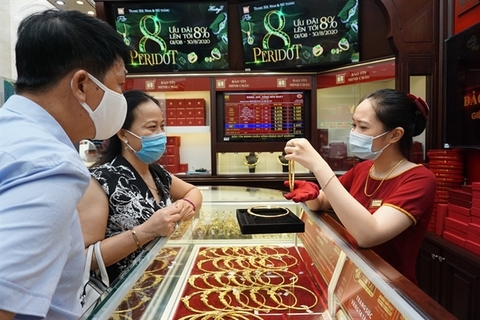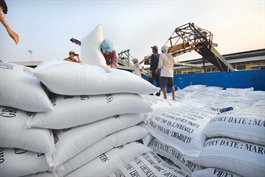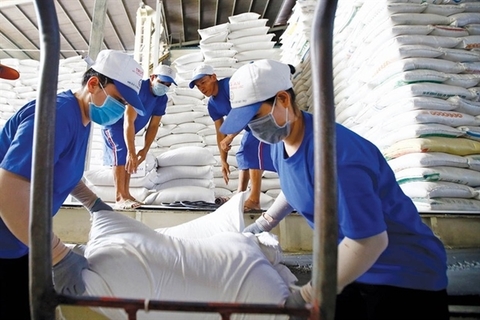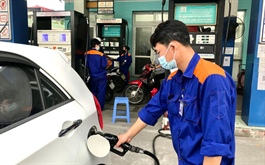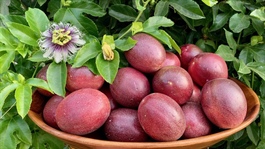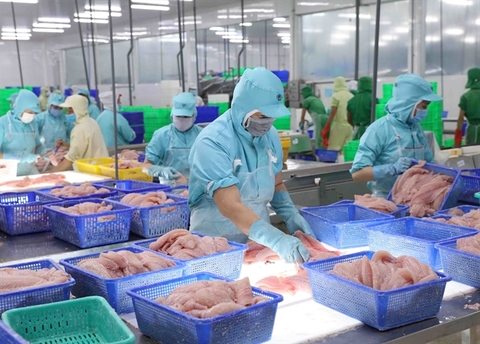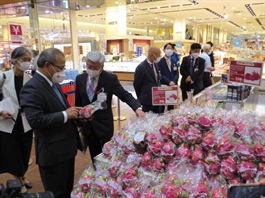Stakeholders in rice place focus on quality
Stakeholders in rice place focus on quality
Suggestions are being made to invest in processing and marketing techniques that add value to Vietnamese rice, with the country planning to limit production in the coming years.
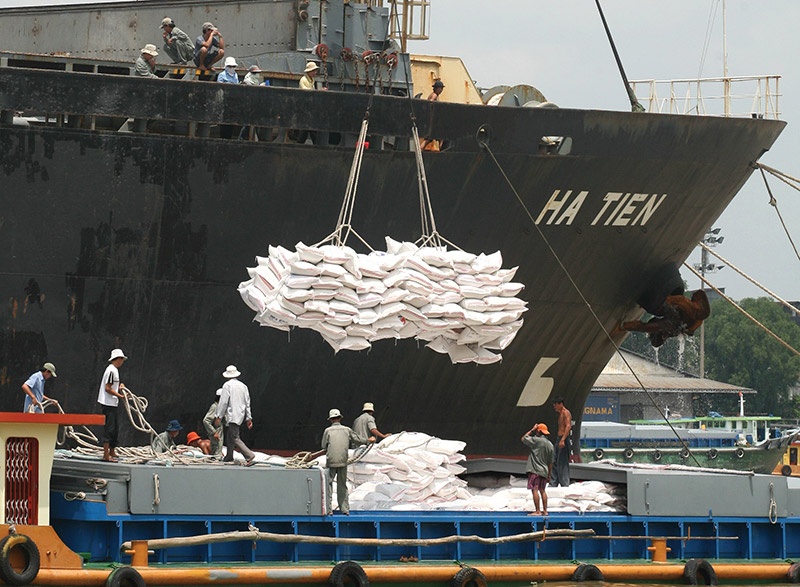
In Mozambique’s central Zambezia province, many farmers have benefited from Vietnamese research, said Esperança Bias, president of the National Assembly of Mozambique, while visiting the Mekong Delta Rice Research Institute in the Mekong Delta city of Can Tho on June 23.
According to Bias, Mozambique is interested in rice grains developed by Vietnamese researchers, as well as farming techniques and public-private partnerships between scientists and businesses for new rice varieties that meet market demand.
Mozambique could be the gateway for Vietnamese rice to expand its market share in Africa. Data from the Ministry of Industry and Trade (MoIT) shows that rice is Vietnam’s largest export item to Africa, accounting for 20 per cent of the country’s total exports there.
Localities are being urged to work together to increase the share of varieties and also apply new tech, Le Toan
Plagued by issues of food security and the pandemic, African rice production can only meet 60 per cent of the region’s needs. According to rice exporters, the opportunity to increase market share and export value is high, as many importing countries are concerned that supply remains scarce due to high inflation in the largest economies.
Traditional importing markets of Vietnamese rice, such as the Philippines and Africa, are rebalancing their inventories and obtaining new import permits.
Japanese group Nomura Holdings in a report published at the end of June said that food prices in Asia (excluding Japan) increased by 5.9 per cent in May compared to the same period last year. Inflation would accelerate rapidly in the second half of the year, with a lag of about six months between global food price movements and the impact of inflation on the region.
On average, Vietnam produces about 26-28 million tonnes of rice per year. After domestic consumption, the volume of rice for export amounts to about 6-6.5 million tonnes per year, of which the Mekong Delta region accounts for more than 50 per cent of the production and more than 90 per cent of the country’s rice exports, according to data from the MoIT.
Vietnam ranks sixth in the world in terms of rice production and third in terms of rice exports.
The government advocates reducing production to increase the value of Vietnamese rice in the context of new challenges arising from climate change and small-scale production in the Mekong Delta.
Pham Minh Thien, general director of Co May Group, commented, “Cutting production and increasing the quality of exported rice is a good sign. But Vietnam does not have many companies investing in deep processing and offering added value to rice and rice grains.”
Reducing the production to increase the value of rice could help the rice industry to exceed the $3 billion in export sales per year, suggested Nguyen Quoc Toan, director of the Department of Agricultural Product Processing and Market Development under the Ministry of Agriculture and Rural Development (MARD). “Many mechanisms and policies to develop the rice industry have been proposed, but in practice, there are still bottlenecks in infrastructure, business links, and farming cooperatives,” he explained.
Nevertheless, the current trend moves towards high-quality, fragrant rice rather than merely filling everyone’s stomach. And, Vietnam as one of the leading rice-producing countries in the world might quickly change direction and approach this new trend to meet the needs of the domestic and export markets.
Dr. Tran Ngoc Thach, director of the Mekong Delta Rice Research Institute, said that his organisation is focusing on researching high-quality rice varieties that met export requirements and help with adapting to climate change.
“Currently, fragrant rice varieties in the Mekong Delta have a total production of about 3.5 million tonnes of rice, according to the MARF’s Department of Crop Production,” Thach said.
“To improve the quality of Vietnamese rice, localities and businesses need to act synchronously to increase the share of high-quality rice varieties and apply technology in harvesting, processing, and storage,” he added.






